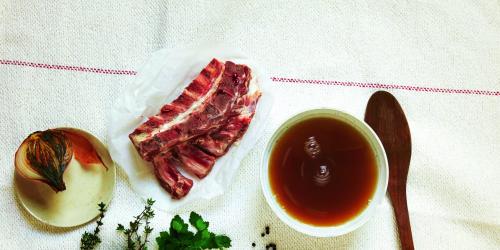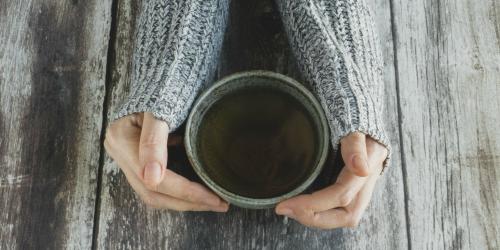When peaches, apricots, red berries and even grapes disappear from market stalls, citrus fruits replace them favorably.
"These fruits are essential," says dietitian Véronique Liégeois. * They have a high nutritional density because of their high vitamin content and low caloric intake: 40 to 45 Kcal / 100 g, and only 32 for lemon. All of them count as "healthy" foods, and even clementines, which are sweeter in the mouth because they are less acidic, do not have more carbohydrates than others. "
Citrus fruits: an excellent source of vitamin C
One of their strengths is vitamin C: 35 to 55 mg per 100 g depending on the variety, which is half of the recommended daily intake.
Thanks to her, the immune system is boosted. Its slight anti-inflammatory effect erases tiredness and helps to better withstand microbial attacks.
By intervening in the production of collagen and cell renewal, it also promotes the firmness of the skin.
Another common feature of citrus fruits is their high mineral content . "" All are full of potassium (1 to 180 mg / 100 g), which decreases water retention, "says Véronique Liégeois, who are also the best-supplied fruits of calcium (20 mg / 100 g of grapefruit). more than 40 mg / 100 g of orange), hence their importance for strengthening the strength of the skeleton. "
A concentrate of antioxidants
But one of the main interests of citrus fruits is indisputably their exceptional content of flavonoids, powerful antioxidants that act in synergy with vitamin C, and which we know better and better anti-aging benefits.
The most abundant of them, hesperidin, plays a crucial role on blood pressure. French researchers at the National Institute for Agricultural Research (INRA) have shown that this nutrient reduces hypertension by improving the resistance and dilation capacity of blood vessels.
Clinical studies ** suggest that hesperidin dulls the signs of skin aging. After six months daily intake of citrus extracts (providing 432 mg of this valuable compound), the density of the components of the substance of the dermis would be increased, and the score of skin folds (wrinkles and fine lines) would be reduced by 18% in menopausal women! By the fourth month of supplementation, more than half of the pigment spots would also begin to fade.
A fountain of youth, easily accessible, it would be a shame to deprive yourself. Especially the subtle cocktail of polyphenols contained in citrus (monoterpenes and flavonones) also has an anticancer activity.
Its ability to counter the proliferation of tumors has been established, particularly in the esophagus, stomach and colon.
How to choose citrus?
Do not trust their color.
Indeed, the green pigments of citrus skin turn yellow and orange only under the action of cold. The fruits harvested in sunny areas can therefore be slightly green even if they are ripe.
The shine of the skin is also not a guarantee of quality: many are coated with a thin layer of paraffin to prevent the growth of mold.
A single criterion of choice: citrus must be firm and heavy, compared to their size: "A soft fruit is an old fruit," said Christine Virbel-Alonso ***.
We buy them preferably organic , especially if we want to use the zest or eat the fruit with its skin (this is the case of kumquat in particular). Otherwise, they are blanched for two to three minutes in boiling water to remove the many surface pesticides that result from post-harvest treatments.
Whole citrus rather than juice
Orange , whose concentration in polyphenols is the highest (279 mg / 100 g, against 192 for mandarin, 163 for grapefruit and 60 for lemon), seems the best protector. But, ideally, it is better to vary its consumption to benefit from the specificities of each fruit.
Grapefruit thus contains compounds that act indirectly by prolonging the life of anti-cancer drugs present in other foods.
Lime - a distinct species, not a yellow lemon picked before maturity - can initiate the decline of cancer cells in the pancreas.
To fully benefit from their benefits, it is best to eat the whole fruit. "In the form of juice, some of the active fibers and polyphenols are lost," explains Véronique Liégeois. They are cut at the last moment so that the vitamins are not destroyed in contact with the air. And, while drinking a juice, nothing beats the one made at home, fresh and pressed at the last moment!
Industrial juices suffer nutrient losses due to pressing, storage (high temperature) and storage processes. In the fresh section, prefer the "pure juice" which only keeps for a few days: they have been subjected to less aggressive techniques (no flash or high pressure burner) and have theoretically not dragged into warehouses .
Transparent bottles are avoided because vitamin C is denatured in the light. Of course, products containing added sugars are banned. Finally, we opt for those whose expiry date is the farthest, so manufactured as recently as possible.
According to a study by the University of Arizona, citrus juices lose about 2% of their vitamin C content a day. We count: after four to six weeks in the store, there is not much left.
Citrus fruits and medicines: pay attention to risk mixtures!
Citrus fruits and medicines do not mix well.
Their consumption is to be avoided within three hours before or after ingestion of antacids because they increase the absorption of aluminum contained in these tablets. However, aluminum is involved in many diseases of the digestive tract and Alzheimer's disease.
Grapefruit and Seville orange (bigarade) interfere with almost all classes of medicines.
The naringine they contain slows down the activity of the liver enzymes responsible for metabolizing them, which increases the concentration of drugs in the blood. Hence a possible increase in side effects and a risk of overdose.
This doping effect is particularly acute with anxiolytics (benzodiazepines), antiallergics (terfenadine), certain drugs for the heart (calcium channel blockers) and against hypertension, and can persist for up to three days after ingestion.
* Author of "The 100 Foods That Care" (First Ed.).
** Produced by L'Oréal and Nestlé in 2011.
*** Author of "Lemon and other citrus fruits" (Eyrolles edition).




